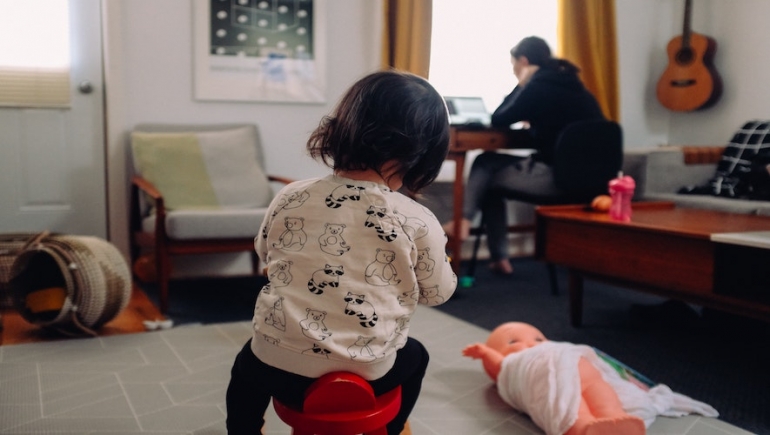The COVID-19 pandemic took a toll on the mental health and wellbeing of frontline workers in Australia’s domestic and family violence (DFV) sector, but also introduced new ways of working that have benefited both workers and their clients.
The findings of interviews with DFV practitioners across Australia between July and October 2020 are presented in a new report, How frontline domestic and family violence workforce in Australia kept connected to their clients and each other through the pandemic.
At the start of the pandemic, there were widespread concerns that measures to reduce the spread of COVID-19 would see people at greater risk of DFV, due to being confined at home with perpetrator(s) and with reduced opportunity to seek help and support. As anticipated, DFV workers reported that demand on services increased, with the exception of shelters, possibly because of the fear of contracting COVID-19 in shared accommodation.
But the study highlights a more complex picture of DVF during the pandemic. It’s likely that many more incidents of violence were not reported, as lockdown measures made it difficult to contact police and other services. Sector workers also reported that COVID-19 was used as a tactic for DFV, with monitoring and technology abuse worsening.
The report’s lead author, Dr Patricia Cullen of the School of Population Health UNSW, said like many sectors, the DFV workforce in Australia adopted new ways of working to keep connected to their clients and each other.
“Our study has identified many innovative ways services have adapted, including switching from face-to-face to telehealth services,” Dr Cullen said. “Some services had to completely change the way they worked, for example, extending hours from 9-5 to 24/7 to meet increased demand.”
Dr Cullen said the workforce was thrust into a “double frontline” - becoming essential workers in a pandemic in addition to their already difficult roles on the frontline of Australia’s DFV epidemic.
“In addition to the additional workload and fatigue, many found it challenging to work from home due to the collision of work and home life,” Dr Cullen said.
“The risks of vicarious trauma were also greater when working from home without colleagues around for support. One worker reported feeling like they were bringing the violence into their own home, saying, ‘it feels like it’s here all the time’.
“Another worker told of a colleague working from their bathroom, to ensure their children would not be exposed to their work.”
On the other hand, for those who continued working face-to-face, there was considerable challenges in doing so safely, both for their clients and themselves. Workers described the realities of maintaining social distancing and infection control procedures, as well as holding concerns for their own health and for their family, particularly for those who may have had additional health risks.
The study asked workers what they wanted to see as part of their “new normal”. The report recommends:
- Flexible working including a blend of working from home and working on site – Workers enjoyed the benefits of flexible working conditions provided during 2020, including the ability to better balance work and caring responsibilities.
- Support for wellbeing initiatives - Many workers wanted to see the wellbeing initiatives that were introduced during COVID-19 to continue, to mitigate the risk of vicarious trauma that is present within the sector.
- Online and telehealth options for clients – Workers supported continuing to offer telehealth and digital support options to clients who face difficulties physically accessing services. They noted that many clients seemed to prefer online counselling to face-to-face counselling. However, practitioners emphasised that relying solely on telehealth/digital models of service delivery would limit quality of care and could create access barriers for some high-risk people.
The research by the School of Population Health UNSW was funded by the UNSW COVID-19 Rapid Response Research Fund and supported by the Australian Human Rights Institute and The George Institute for Global Health, co- investigators of the COVID-19: Understanding the sex and gender dimensions on women’s health and wellbeing project.
